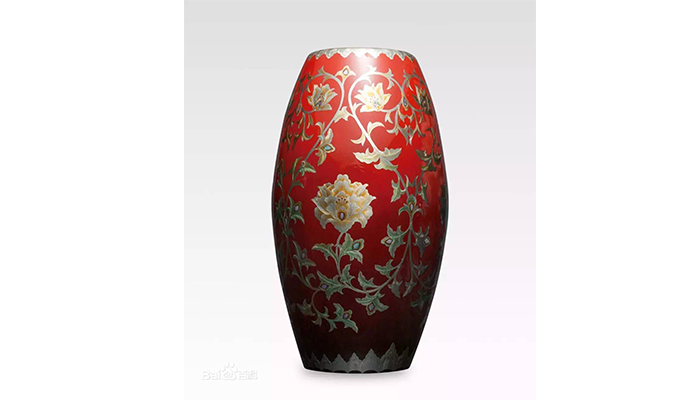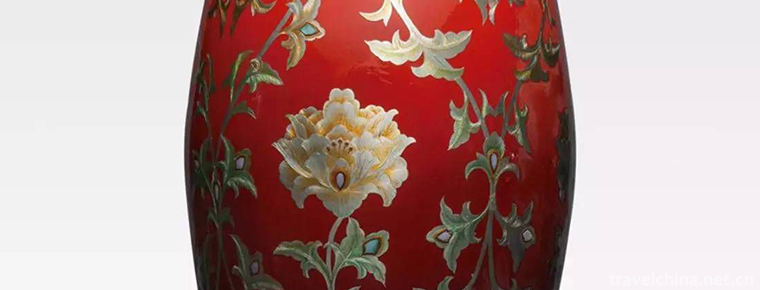Chengdu lacquer art
Chengdu lacquer art
Chengdu lacquer art, the traditional handicraft of Chengdu City, Sichuan Province, is one of the national intangible cultural heritage.
Chengdu lacquer art originated in Shang and Zhou Dynasties, matured in Han Dynasty, flourished in Tang Dynasty and continued to develop in Song, Ming and Qing Dynasties with a long history.
On May 20, 2006, Chengdu Lacquer Art was approved by the State Council to be included in the first batch of national intangible cultural heritage list, project number_-56.
historical origin
Chengdu lacquer has a very long history. It can be traced back to the ancient Shu Dynasty more than 3000 years ago. During the Warring States Period, Chengdu lacquer ware spread all over China. At that time, the level of Chengdu lacquer art was quite developed. In the Western Han Dynasty, on the basis of the original technology, Chengdu lacquer art invented the needle scratch filling method, as well as the stacking method of filling patterns with thick materials. Especially, it is popular to use agate or glazed beads as buttons and gold and silver buttons and hoops on the body of the utensils. At that time, Shu County and Guanghan County were already the national lacquerware production centers. The varieties included boxes, baskets, plates, ear cups, flat pots, cases, rolls, etc. The lacquerware is exquisitely and beautifully painted with useful colors, such as birds, animals and immortals. The lacquerware produced in Chengdu, Pixian and Northern Guanghan counties in Sichuan has formed its own style and become a self-contained whole.
In the Five Dynasties, the gold and silver inlaid lacquerware in Chengdu reached a fairly high level of technology. Judging from the large number of coffins, panels, albums, treasures and mirror boxes unearthed from Wang Jian's tomb, the lacquer art level at that time was very high.
Chengdu lacquer art reached an almost insurmountable height in the Tang Dynasty, with thick lacquer moulding and bulging pattern of stacking lacquer; with shells cut into images, thread carving and inlaid into threads on the lacquer surface; with honeysuckle chips inlaid into gold and silver strippers, etc., fully demonstrating the excellent skills of Chengdu lacquer ware at that time.
In the Ming and Qing Dynasties, Chengdu has become one of the national origins of carved lacquer and color-filling lacquerware. There are 14 types of lacquerware in Chengdu, including colored lacquerware, enamel, gold-tracing, paint-stacking, paint-filling, carving and filling, mole, rhinoceros skin, red-picking, rhino-picking, colorful, bamboo inlay, etc.
With the development of contemporary era, Chengdu lacquerware has formed its own unique style. Its traditional handicraft techniques such as carving and filling, silver mercerizing, mosaic depiction and other regional characteristics have been unanimously praised. At present, Chengdu lacquerware is still one of the top five lacquerware in China, which is as famous as Beijing, Fujian, Yangzhou and Yangjiang in Guangdong.
Process characteristics
Chengdu lacquer art, with many crafts, exquisite workmanship and long production time, is known as "carving knowledgers, hundreds of tricks and thousands of workers". Its complex raw material formula embodies the important inventions in Chemical Technology in ancient China; unique decoration techniques, such as "carving and filling, carving tin mercerizing, mosaic depiction" and other unique regional characteristics, as well as "flat drawing, broach needle carving, stacking paint technology" and other rare techniques, have their own genres, unique style in lacquerware technology.
In Chengdu lacquer art, carving and filling technology and tin flake flat support have the characteristics of generous and elegant shape, exquisite and graceful technology and moist. The carving and filling process, because of its gray paste-like paint color, shows its introverted and elegant quality, gentle and quiet color and luster in comparison with the crystal and clear paint surface, giving people a sense of affinity. In tin flake Pinto artworks, metal refraction flickers, changes are wonderful, paint surface is implicit and inclusive, giving people a generous and elegant aesthetic enjoyment.
Technological process
Chengdu lacquer art uses natural raw lacquer and solid wood as raw materials, including carving and filling, carving and filling flower, carving tin mercerizing, broach needle carving, hidden flower varnishing and other modification processes. Taking the carving and inlaying technology as an example, it mainly includes the following steps: first, design tire samples, decorative drawings and manufacture of wooden tires, and then, after many times of graying, brushing primer and polishing by lacquer workers, apply several polishing paints, each of which must be dry and grinded. Secondly, carving filling, that is, first to copy the designed decorative drawings to the body, with a knife to carve a negative picture. Then scrape the prepared paints into the shade lines and grind them with fine sandpaper until the lines are even with the paint surface. It can also be coated with gold and silver foil, then coated with multilayer transparent paint and ground. Thirdly, polishing and polishing, i.e. applying polishing paint on the surface of lacquerware, grinding it after drying, then rubbing it with hair or cotton vegetable oil, and polishing it many times to make the surface of lacquerware glossy and gorgeous.
Inheritance and protection
Inheritance value
Chengdu lacquer art is an important part of Chinese lacquer art. It is not only an important witness of the customs and the messenger of cultural exchange in Chengdu area, but also an important carrier of Chinese traditional aesthetic concept.
Inheritance status
Chengdu lacquer art is facing many difficulties. First of all, Chengdu lacquer art can only be manufactured by hand, but also can only be passed on orally and heartfelt, which makes it very difficult to pass on. Secondly, due to the narrow product market and the shortage of producers, Chengdu lacquer art is facing an embarrassing situation that there is no market. Only by taking necessary protective measures as soon as possible, can we save this ancient traditional handicraft.
Inheriting characters
Song Xiping, female, Han nationality, born in October 1951, was born in Chengdu, Sichuan Province. In June 2007, Song Xiping was selected as the representative successor of the first batch of national intangible cultural heritage projects. Chengdu, Sichuan Province declared.
Yin Liping, female, Han nationality, born in 1953, is from Chengdu, Sichuan Province. In June 2007, Yin Liping was selected as the representative successor of the first batch of national intangible cultural heritage projects and declared in Chengdu, Sichuan Province.
protective measures
In 1956, Chengdu Halogen Lacquer Society was established, which contributed to the inheritance of local lacquer technology. By 1960, the artists of Chengdu Halogen Lacquer Society grew to 200 at their peak.
On June 3, 2014, in the announcement about publicizing the list of "two bases" of intangible cultural heritage in Sichuan Province, the demonstration base of non-material cultural heritage blocks in Sichuan Province was selected as the first batch of non-material cultural heritage transmission bases in Sichuan Province.
social influence
Important activities
On August 22, 2018, Chengdu Lacquer Art Residence Program, a public welfare project aimed at protecting and continuing the beauty of Chengdu Lacquer Art, was launched in Chengdu, Sichuan.
Important exhibition
On July 26, 2017, "Sichuan First Lacquer Exhibition" was held in Sichuan Museum. A total of 96 pieces of fine lacquer works were exhibited by both the old artists who have been performing for more than 40 years, and the "post-90s" fresh fighters who have just left the university. Among them, 12 provincial masters of Arts and crafts participated in the exhibition.
From October 13 to 17, 2017, the second Changjiang intangible cultural heritage exhibition was successfully held in Wuhan International Convention and Exhibition Center, Hubei Province, in which Chengdu lacquer art was displayed.


-
1.MountHuaguoshan
Mount Huaguoshan (Lianyungang Huaguoshan Scenic Area) is located at the middle foot of Nanyuntai Mountain in Lianyungang City.
Time 2018-12-06 -
2.Xitang Ancient Town Tourist Scenic Spot
Xitang Town, belonging to Jiashan County, Jiaxing City, Zhejiang Province, is located at the junction of Jiangsu, Zhejiang and Shanghai. It has an ancient name of Xietang
Time 2018-12-07 -
3.Longzi Lake Scenic Area
Longzihu Scenic Area, located in Longzihu District of Bengbu City, Anhui Province, is a national AAAA-level tourist attraction, a national ecological demonstration area and a provincial-level scenic s
Time 2019-02-06 -
4.Ancient Town of Yi Nationality
The ancient town of Yi people is located in the north of Yongan Avenue, the west of Sun Li Park, the east of Longchuan River and the south of Chuda Expressway in Chuxiong Economic and Technological De
Time 2019-03-04 -
5.Pot fried chicken
Guguo fried chicken is a local traditional dish in Changshu, Jiangsu Province, which belongs to the Su cuisine family. Located at the foot of Yushan Mountain in Changshu
Time 2019-03-25 -
6.High cavity
Gaoqiang is one of the four major tunes in Chinese opera. Gaoqiang was originally called "Yiyang Cavity" or "Yiqiang Cavity", because it originated in Yiyang, Jiangxi Province.
Time 2019-04-30 -
7.Folk embroidery
Folk embroidery is a traditional Chinese handicraft, which integrates traditional folk art, folklore knowledge and traditional handicraft. It has high ornamental value, practical value and collection
Time 2019-06-05 -
8.Western Qin Opera
Western Qin opera, also known as "chaotic play", is popular in Haifeng, Lufeng, Chaoshan, southern Fujian and Taiwan. Western Qin Opera flowed into Hailufeng in the northwest of the Ming Dyn
Time 2019-07-01 -
9.Craftsmanship of Fireworks and Firecrackers
China is the first country to invent gunpowder in the world. Fireworks and firecrackers made of gunpowder also have a long history and enjoy a high reputation in the world. The record of firecrackers
Time 2019-07-10 -
10.Chengdu University
Chengdu University, established in 1978 with the approval of the Ministry of Education, is a comprehensive University jointly built by Sichuan Province and Chengdu City. It is a key comprehensive univ
Time 2019-08-31 -
11.Sausages with cuttlefish
Cuttlefish, also known as cuttlefish, squid. Cuttlefish is delicious, nutritious and of high medicinal value. It is rich in protein, fat, inorganic salt, carbohydrate and many other substances. In add
Time 2020-04-10 -
12.Deyang first industry
In 2018, the sown area of crops in Deyang City was 477000 hectares, 533 hectares less than the previous year, a decrease of 0.1%. Among them, the sown area of grain crops was 311000 ha, decreased by 1525 ha, decreased by 0.5%; the sown area of oil
Time 2020-12-14